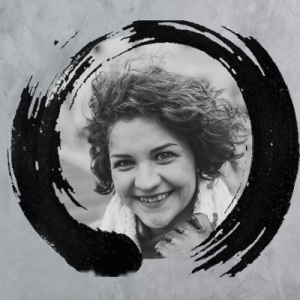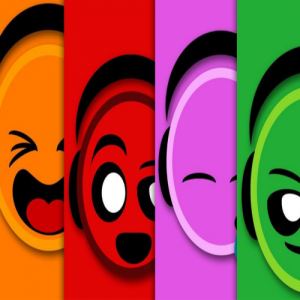I have retired from public teaching but still dedicate more than 10 hours a week to train those who (I hope) will be the next generation of Salsa instructors. For the most part, I work with new TNT students who are recommended to me by Nicola Lambert, owner of TNT Dance, but sometimes I get approached by those that have learned elsewhere and wanted me to help them achieve more in their dancing. When I choose to work with a student from another school I would start by wiping the slate clean and starting from scratch; what I refer to as rebooting and the content depends on the needs of the individual dancer.
In this article I will describe the first 2 months of my latest 12 month programme.
Why Reboot?
Every two years I will wipe clean my laptop and start again from scratch. I work in technology and would often experiment with a variety of software. After a few years, experimentation produces clutter and has the effect of potentially slowing things down.
The same applies to Salsa dancers. After a few years, we would have attended hundreds of classes and workshops, gained material, absorbed sound bites and heard a mixture of philosophies. This is similar to installing 10 different photo editing programs to find which one works for you. This creates clutter in the dancer’s mind and the lack of clarity will slow your Salsa journey.
My latest reboot has been in Salsa for 7 years and though we had a slow initial start she now has clarity, direction and focus on what she needs to work on and is now growing exponentially.
Is this Necessary?
Yes. Different schools have very different ideas of what it is to dance Salsa. While talking to a friend, Basil Pinnock of Dance2Salsa, he said that some schools deal in Salsa Entertainment and some schools deal in Salsa Education; this is an amazing framing for something I have always known. This does not mean that Salsa entertainment cannot be educational or that Salsa education cannot be entertaining but they serve very different markets and have very different focuses. I deal solely with Salsa education as I see all my students as possible contributors to the future of the Salsa scene.
When teaching in a private manner I find that road bumps can stop us from building up momentum. For me, it is always more effective to remove all possible mental obstacles before ploughing along rapidly.
With my latest reboot, I had to dismantle all of her ideas of what Salsa is and install a new perspective and, to keep with the computer metaphor, a new operating system; this operating system will allow her further exploration of Salsa dancing.
For me there are several fundamental components in an operating system that are essential for Salsa. All these components will need to be installed and connected in a logical and effective manner.
Foundation of Music
My definition of dancing is movement to music. If you are moving to Salsa music you are dancing Salsa. If you are moving without any consideration for Salsa music you are not dancing Salsa. A beginner moving randomly to Salsa music is more of a Salsa dancer in my mind than your typical well-drilled dancer executing move after move without considering the music. Our first step, therefore, was to re-introduce her to Salsa Music.
I have written several blogs about Salsa music but I gave her as much knowledge as I have about structure, quirks and instrumentation in Salsa. I also enlisted Jamil Bacha, resident DJ at TNT, to give her a 3-hour session on the history of Salsa music and his personal take on interacting with music.
Note: She is now tasked with listening to as much music as she can get her hands on to become more familiar with the various sounds and rhythms. I have also instructed her to think about how she feels.
Foundation of Movement
I believe that connecting with the floor and deriving movement from the floor is one of the key aspects of dancing Salsa; teaching footwork is a great way to explore your personal connection to the floor, how to move to the various rhythms of Salsa music and how moving to different rhythms can create a different feeling in your body.
When I teach footwork I do not focus on getting the move perfect so that you can repeat it on the dance floor, instead I use footwork to teach some fundamental movement practises. For example, we went through an evening of different Suzy Q combinations with the sole aim of enabling her to cross and uncross her legs in a quick and efficient manner; all of this while asking her to align her own body and understand the way her body turns and adjusts based on these movements. The same could be said about learning flares and gaining the ability to create an extension and understanding how that feels on your own body.
We also worked on bringing awareness to a part of her body that she may use to express the music. We explored range, speed and finally application to music.
Note: Repetition is the best teacher and she has been instructed to practise as often as she can to different songs. With each song try to fit the pattern to the song so that after a while this will become automatic.
Foundation of Connected Movement
I do not believe in the concept of men leading and women following but the concept of co-creation within partner dancing. The best analogy to this is driving a car with your partner by your side. Yes, someone has to have their hands on the wheel and their foot on the gas but that does not mean the passenger is sitting idly. The passenger can be reading the map, suggesting other detours, bringing awareness to the beautiful scenery or watching out for potential danger. The same is true for Salsa dancing as followers, if given space, can bring awareness to music, suggest places you can go and make the trip far more enjoyable and rewarding than the male leading and female blindly following.
We worked to understand how a follower can be an active follower in Salsa without trying to grab the wheel. I personally hate the concept of hi-jacking and prefer more subtle ways of influencing the dance.
We also worked on how to dance with different leading types and personalities and what tools she could use to protect herself as well as thrive.
She has been instructed to dance as much as she can by going to TNT On2sdays, SOS and to go to the various monthly events e.g. MamboCity’s ULU or Erick the Saint’s I Like It Like That. TNT On2sdays, my home ground, attracts a high concentration of fantastic dancers each week and given the relaxed atmosphere everyone dances with everyone else; this will be key to giving her more experience and helping to rapidly develop her dancing.
Note: I mimicked as many different leading types and personalities as I could to give her as much experience as possible. I want her to be able to follow anyone within three months which is not just a matter of technique but experience.
Summary
I wanted to share this with you all because I think reboots are essential to our growth as Salsa dancers. Personally speaking, I rebooted when I moved from Colombian to Cuban, Cuban to On1 and finally my transition from On1 to On2, after each reboot the valuable lessons stayed with me and enabled me to progress faster and further each time.
Have you had a reboot as a dancer? Do you feel like you need one? I would love to know your thoughts and look out for part 2 and 3 of the 12 month programme that will be out soon.





Leave a Reply